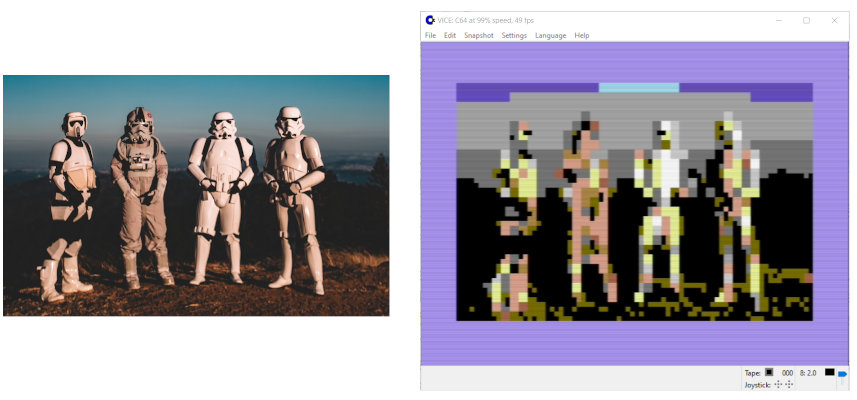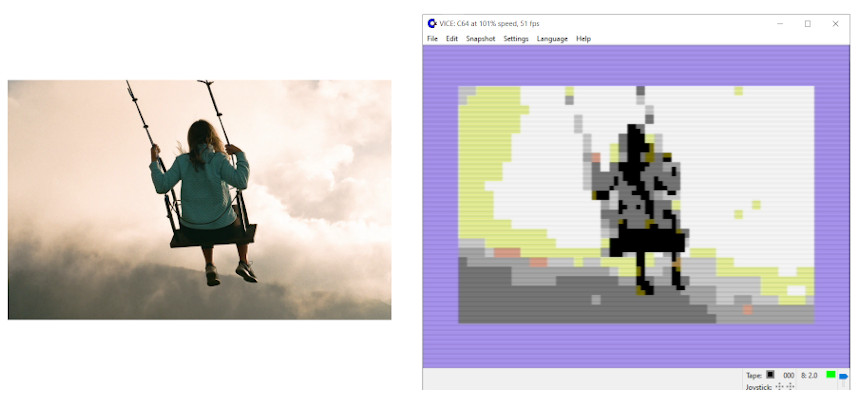User Tools
Table of Contents
GRAPHICS USING MIDRES
INTRODUCTION
Managing bitmap and color graphics on retro computers is expensive. This is due to the limited availability of RAM memory and its relative slowness, as well as the fact that graphics chipsets often do not have dedicated memory. This implies, among other things, that using graphics also reduces the memory available for data and programs. On the other hand, almost all retrocomputers have a “text” mode, which in addition to being managed by the hardware has a very limited memory footprint.
To take advantage of this feature, a special technique for managing graphics is described here, called “midres”. The midres graphics is based on text mode and it emulates raster graphics without having to implement all the logic at the pixel level, at the cost of decreasing the maximum resolution available.
This short essay describes the theory about midres, the operation of a software that generates such images and a library to draw pixels with this graphic mode, as well as the possibility of creating an “out of the box” slideshow.
SUMMARY
This is a short summary of pages related to this topic:
EXAMPLES
This is an example of a 1590×994 pixel (24 bit RGB) image1) converted to an 80×50 (4 bit indexed) “midres” image:

This is an example of a 1046×654 pixel (24 bit RGB) image2) converted to an 80×50 (4 bit indexed) “midres” image:

CREDITS
The photos used in this documentation come from unsplash.com, and they have been processed with the program img2midres in order to be included in the demonstration slideshow, included into the library midres.

